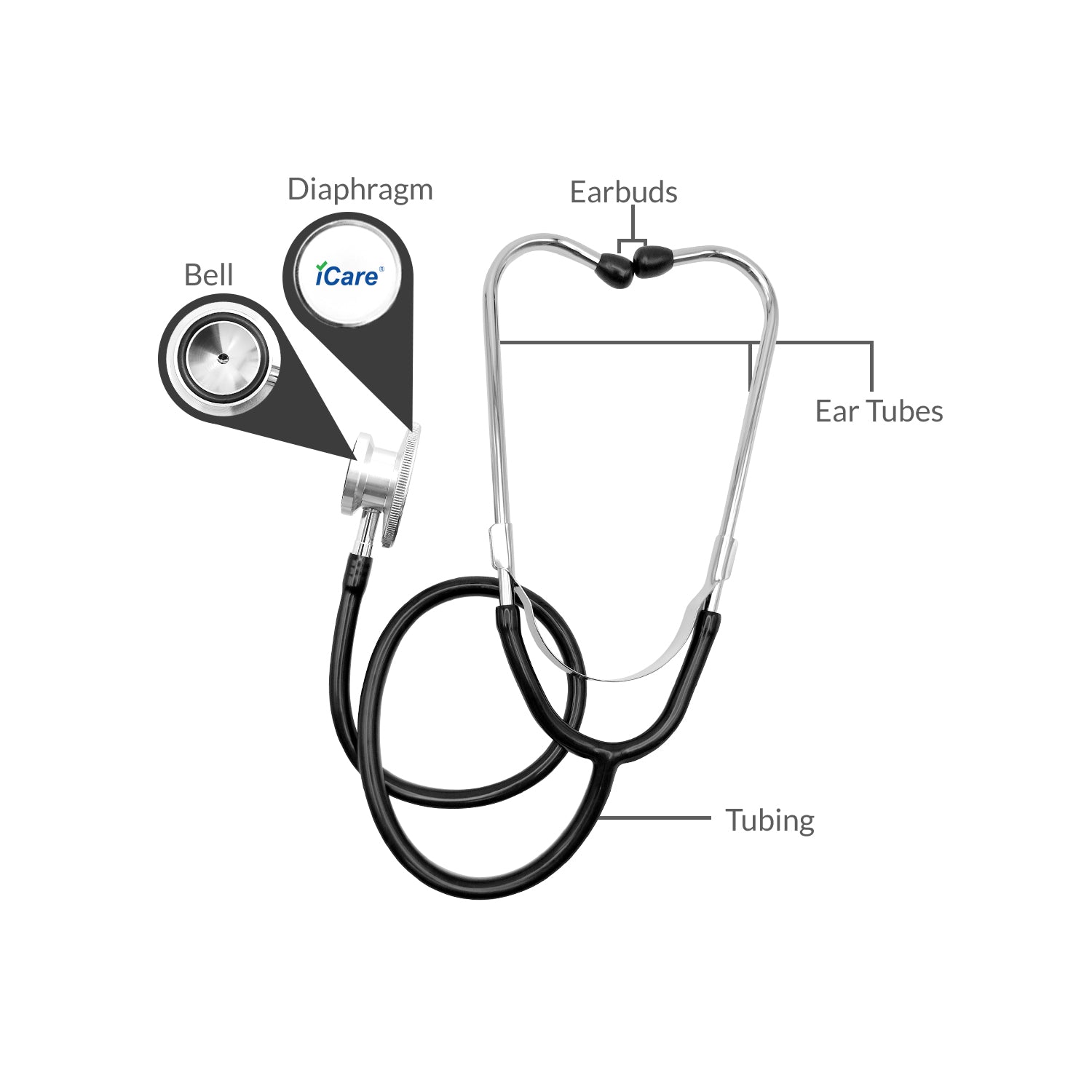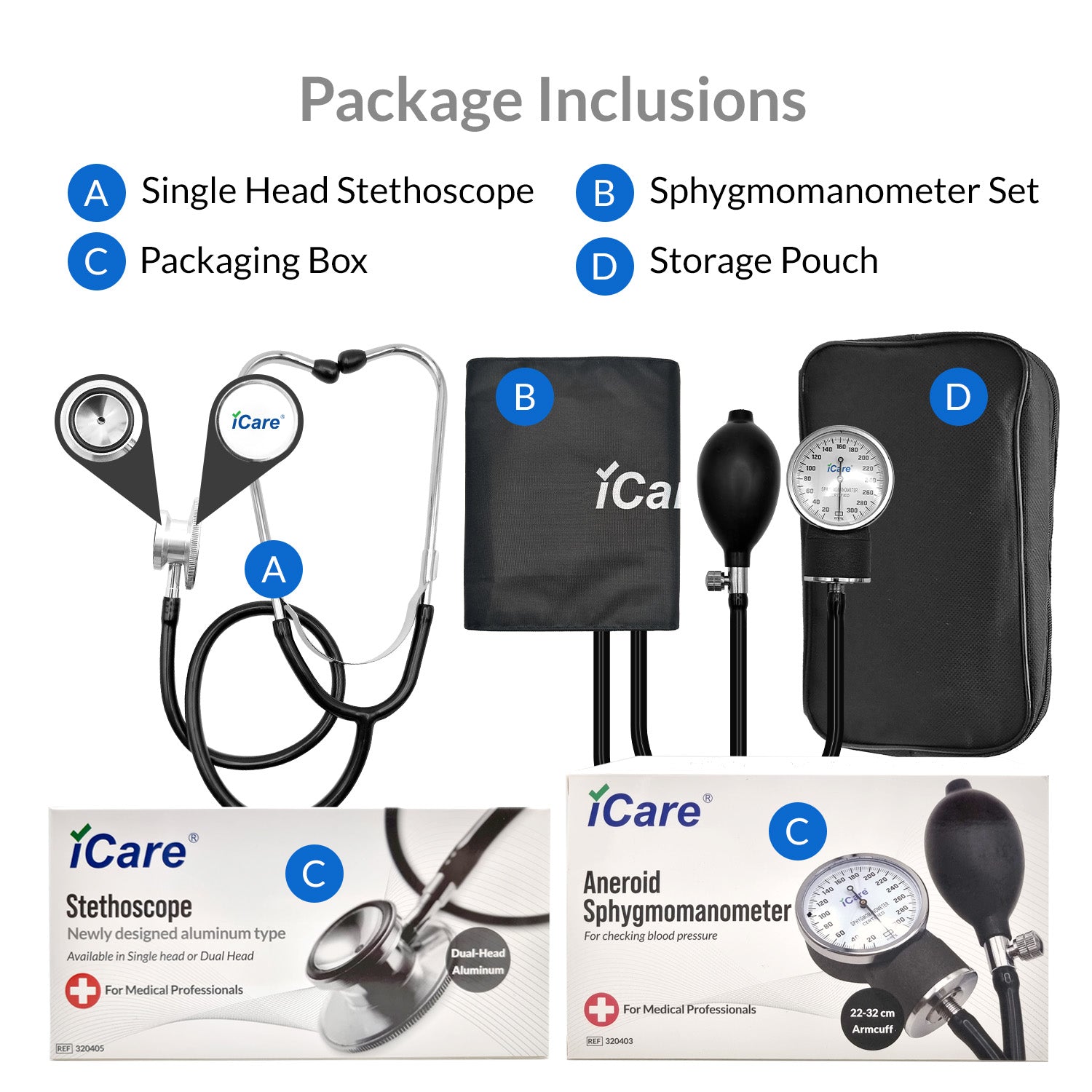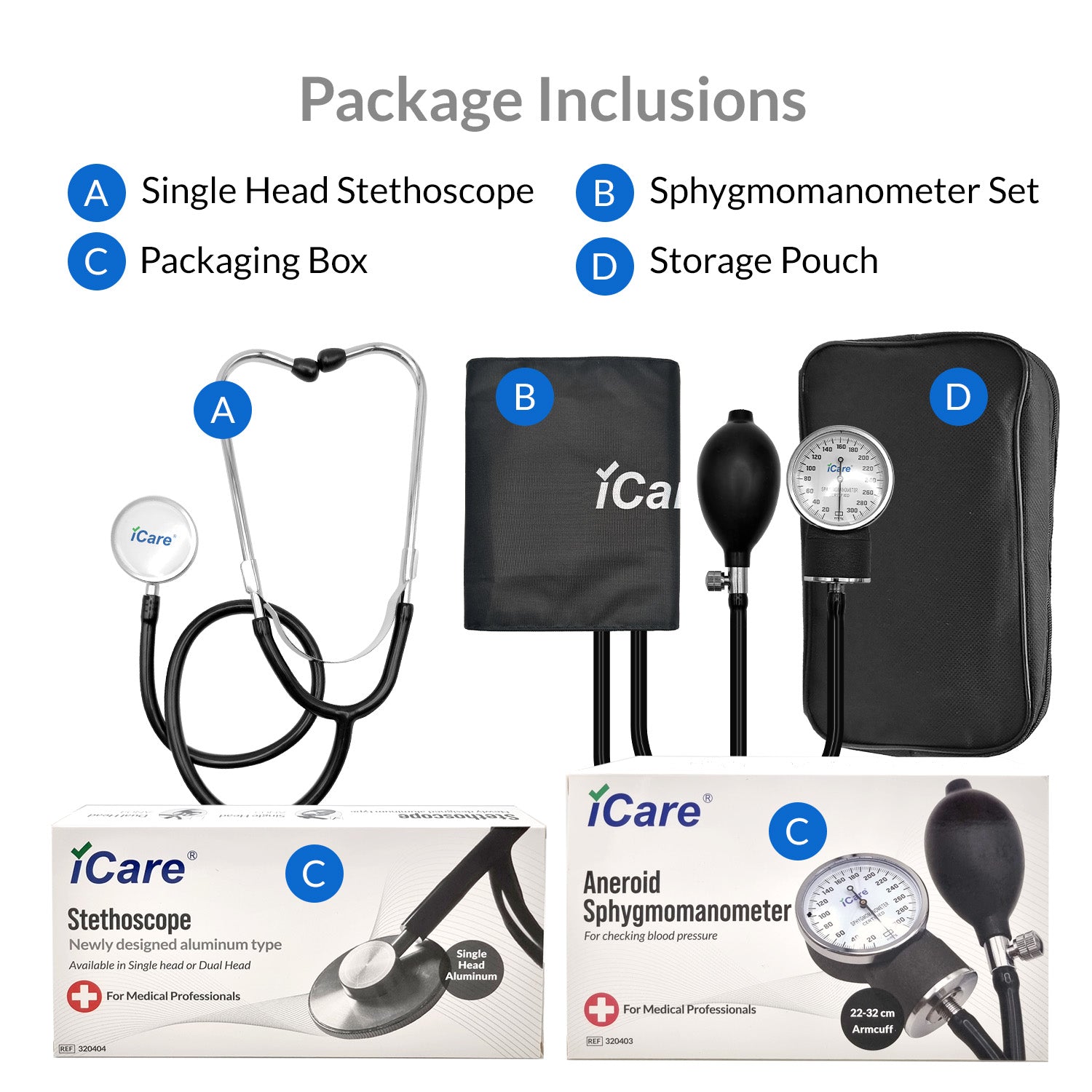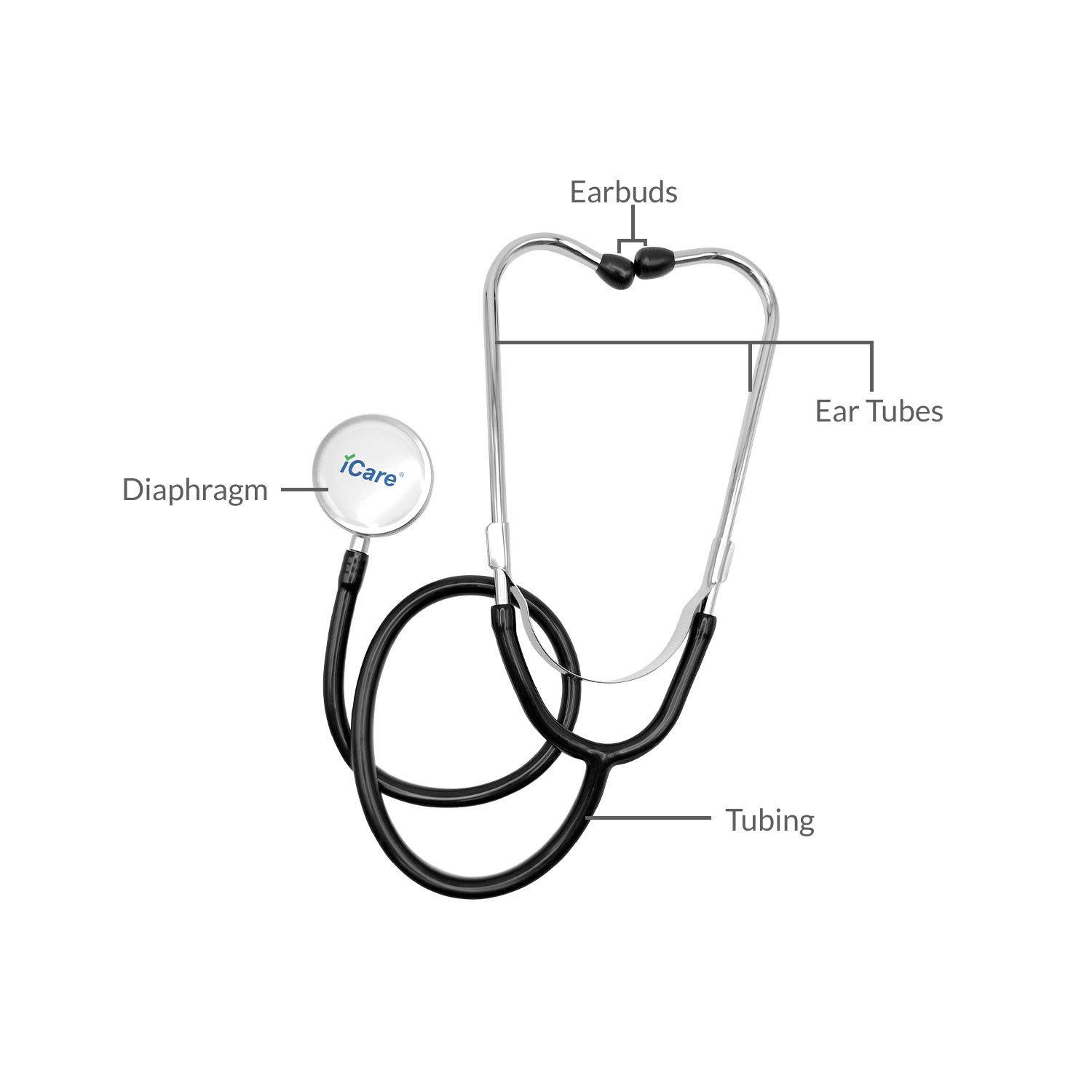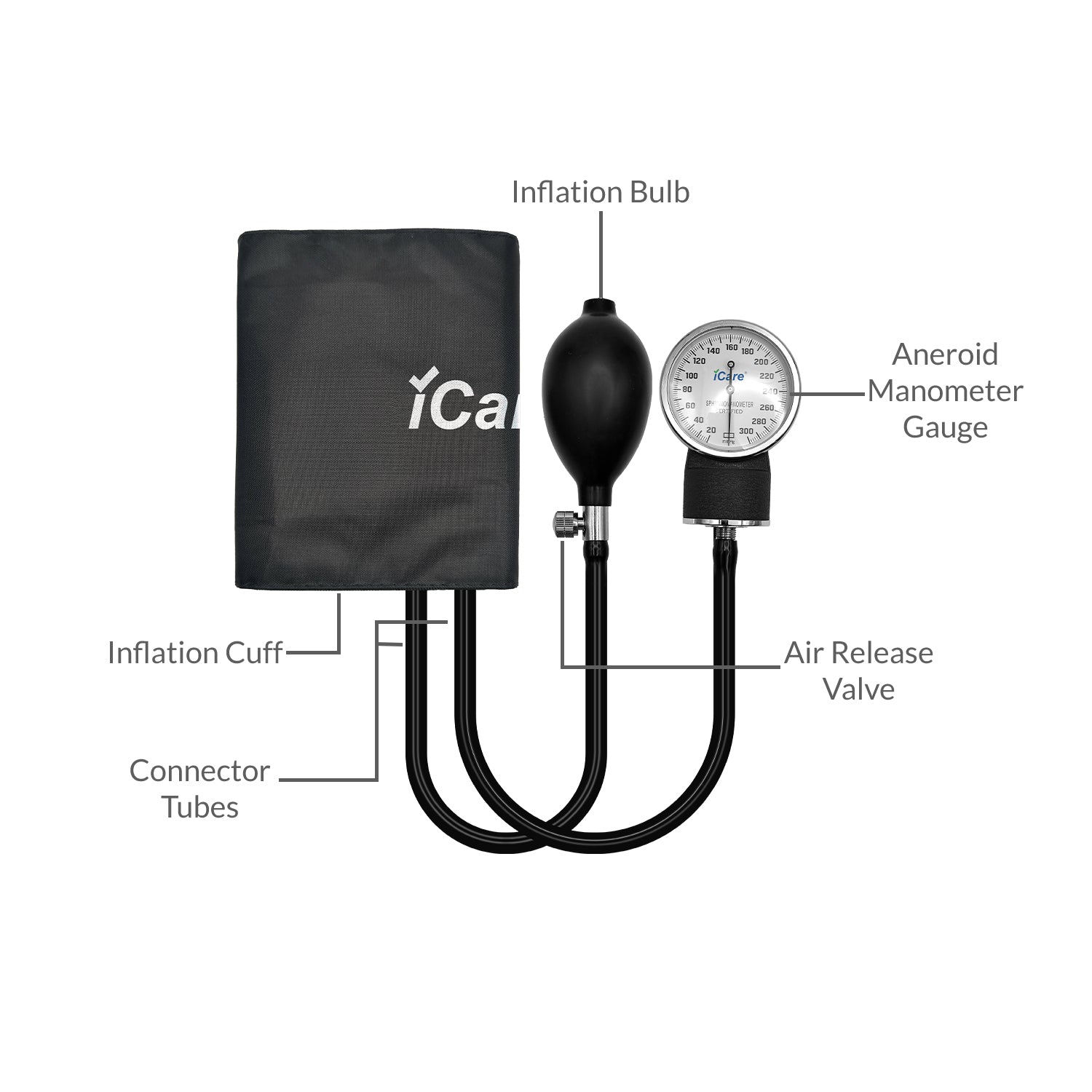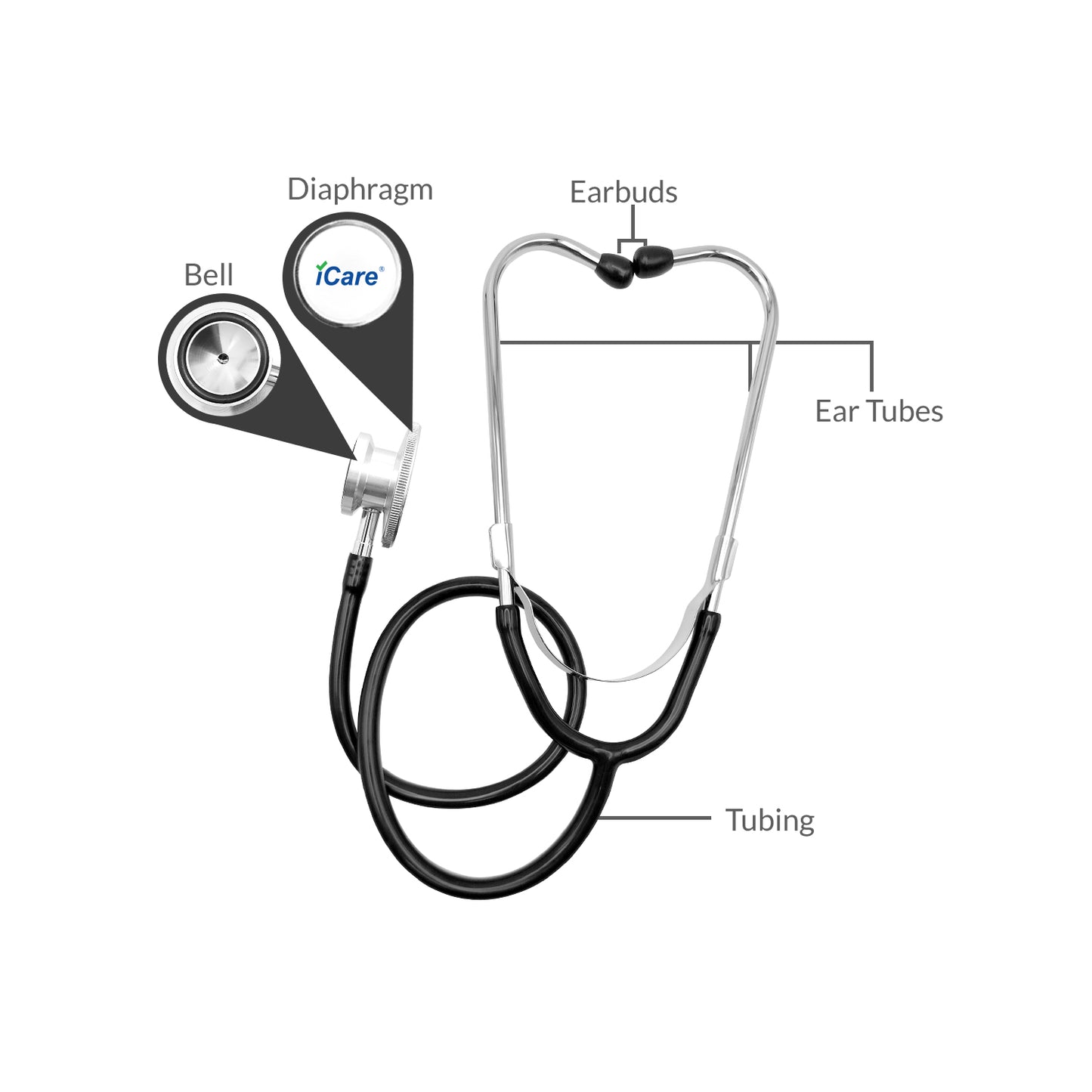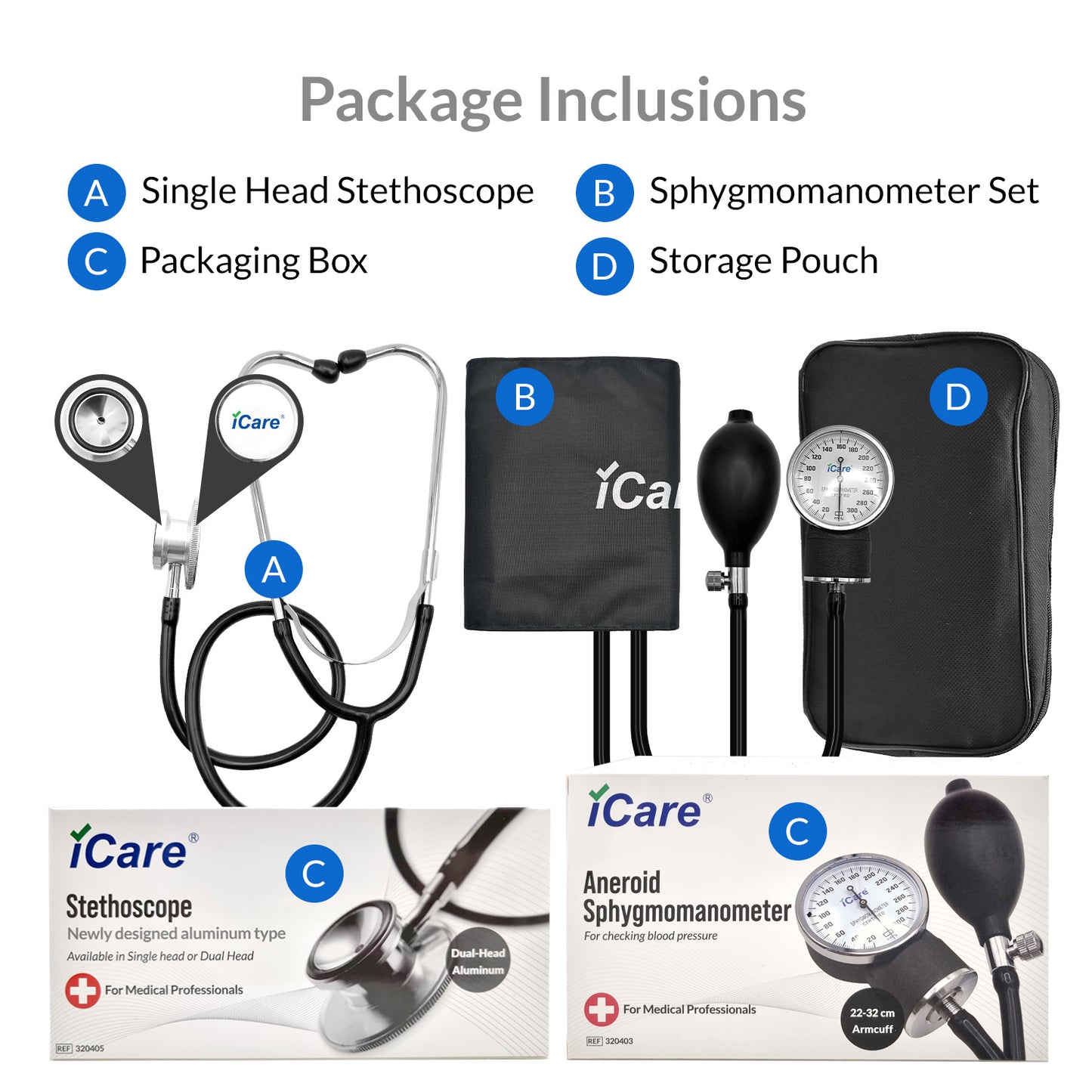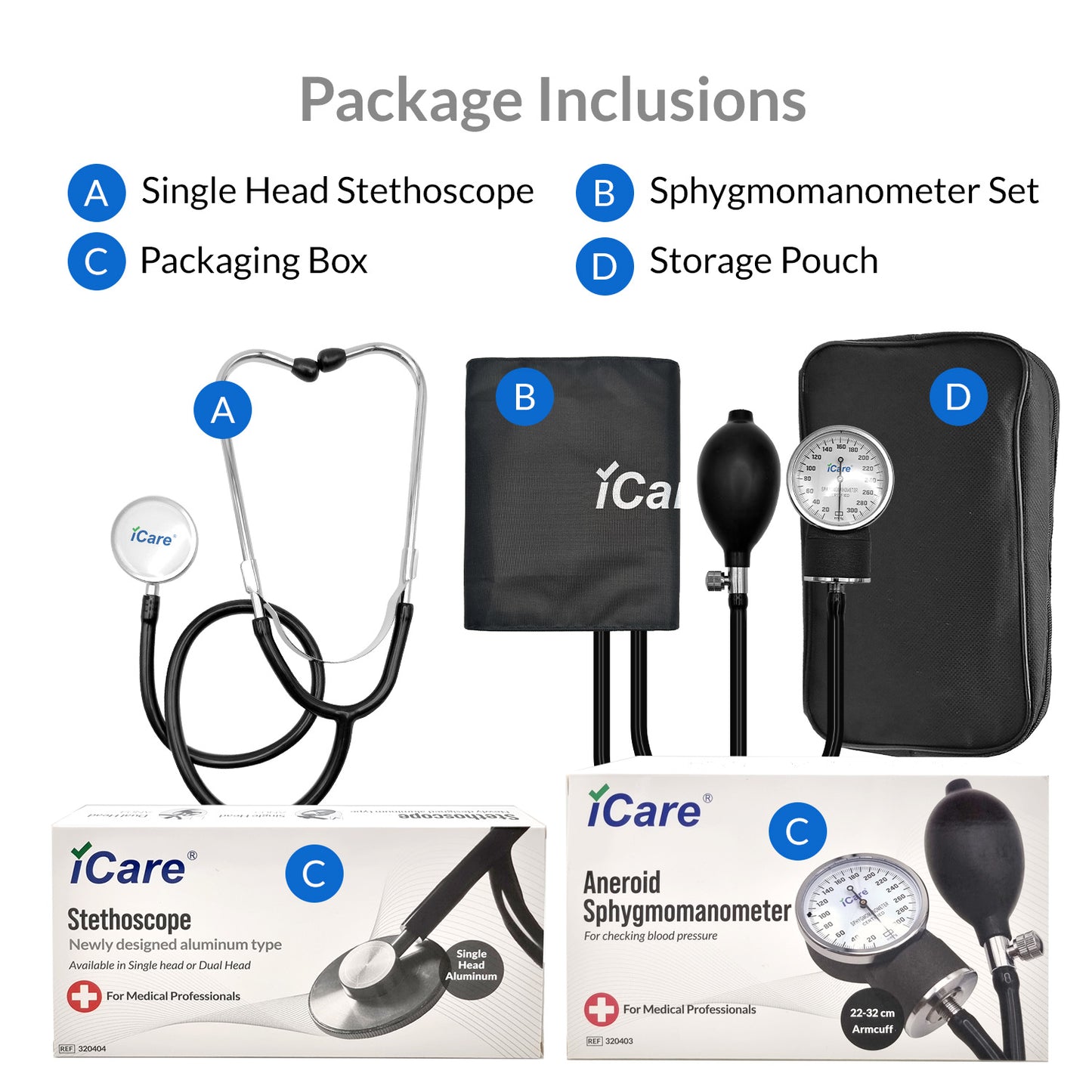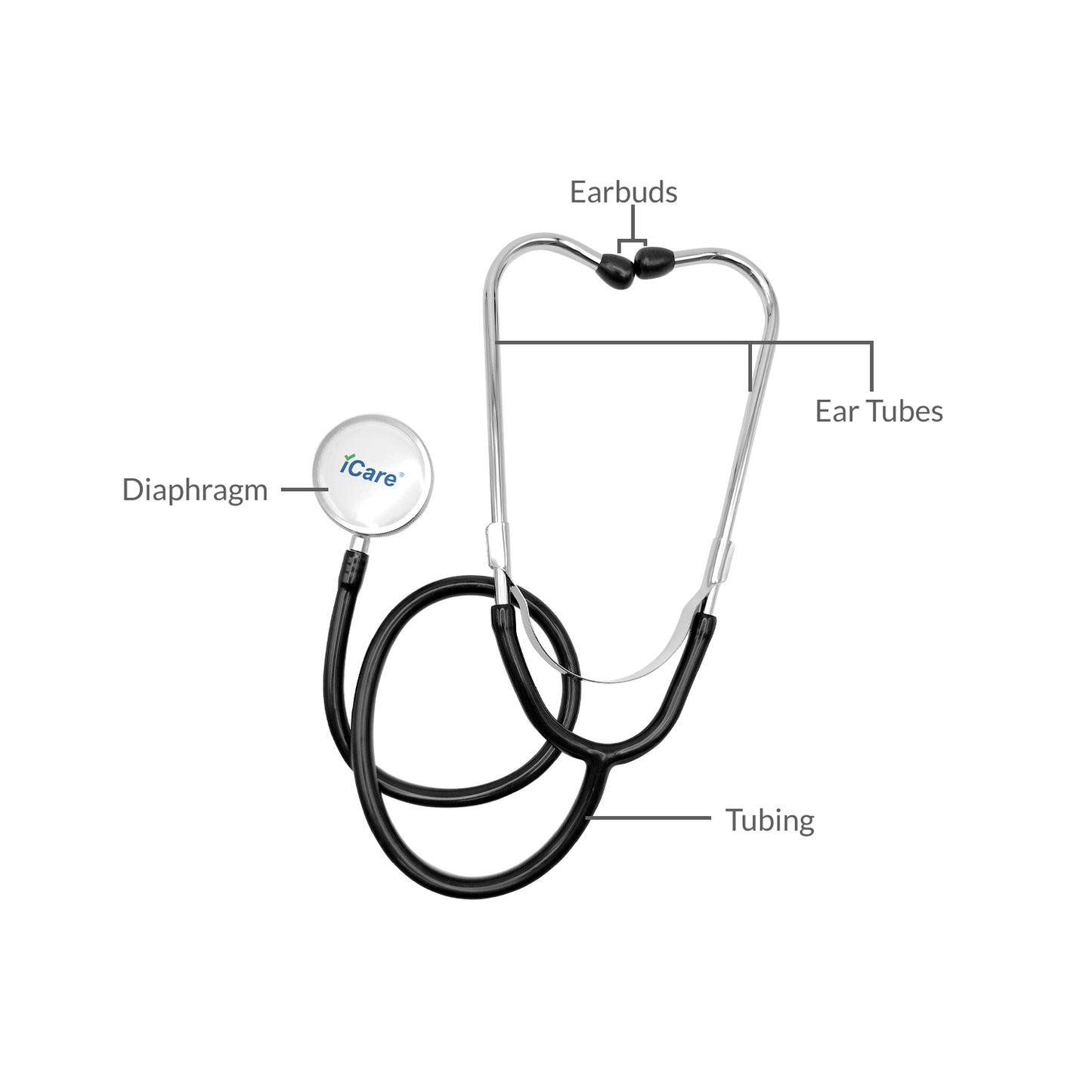


1. Prepare the Equipment:
• Aneroid sphygmomanometer: This device includes an inflatable cuff, a pressure gauge (manometer), and a bulb for inflating the cuff.
• Single-head stethoscope: A stethoscope is used to listen to the sounds of blood flow in the arteries.
2. Position the Patient:
• Ensure the patient is sitting comfortably with their back supported, legs uncrossed, and feet flat on the floor.
• The arm should be resting at the level of the heart (at about the mid-chest level), with the palm facing upward.
• Roll up the sleeve or ensure the cuff is placed directly on bare skin (not over clothing).
3. Apply the Cuff:
• Wrap the cuff snugly around the upper arm about 1 inch above the elbow, making sure the bladder inside the cuff is centered over the brachial artery (on the inside of the elbow).
• The cuff should be snug, but not too tight. You should be able to slide one finger underneath the cuff, but it should not be loose.
4. Locate the Brachial Artery:
• Place the diaphragm of the stethoscope over the brachial artery, which is located just below the elbow crease on the inside of the arm.
• Make sure you place the stethoscope in the correct spot for optimal sound transmission.
5. Inflate the Cuff:
• Close the valve on the inflation bulb and begin inflating the cuff by squeezing the bulb.
• Inflate the cuff until the gauge reads about 30 mmHg higher than the point where you can no longer feel the pulse (or about 180-200 mmHg in most adults).
• You will not hear any sounds yet as the cuff is fully occluding blood flow.
6. Deflate the Cuff Slowly:
• Slowly open the valve on the bulb to deflate the cuff at a steady, controlled rate (about 2-3 mmHg per second).
• Keep your ear close to the stethoscope to listen carefully.
7. Listen for Korotkoff Sounds:
• First Sound (Systolic Pressure): As you begin to hear rhythmic tapping sounds, note the first appearance of sound. This is the systolic pressure, which reflects the pressure in the arteries when the heart contracts.
• Disappearance of Sound: Continue to deflate the cuff slowly. The sounds will eventually fade and disappear.
• Second Sound (Diastolic Pressure): The point where the sounds disappear marks the diastolic pressure, which represents the pressure in the arteries when the heart is at rest between beats.
8. Record the Blood Pressure:
• The reading is given as systolic pressure over diastolic pressure (e.g., 120/80 mmHg).
• Once you hear the last sound or it disappears, stop deflating the cuff, and record the systolic and diastolic pressures.
9. Recheck if Necessary:
• If you did not hear clear sounds or if you're uncertain about your readings, it’s a good idea to repeat the measurement for accuracy.
10. Remove the Cuff:
• After recording the blood pressure, completely deflate the cuff and remove it from the patient's arm.
Important Tips:
Avoid talking or moving during the measurement to prevent inaccuracies.
Ensure the cuff is the right size for the patient’s arm to get an accurate reading.
Wait 1-2 minutes between measurements if taking more than one reading on the same arm.
By following these steps, you can accurately measure blood pressure with an aneroid sphygmomanometer and a single-head stethoscope.

